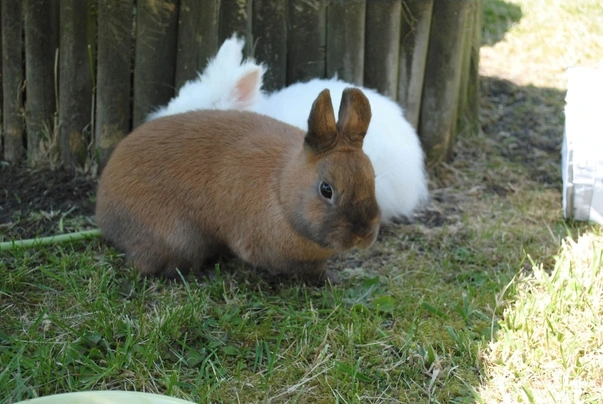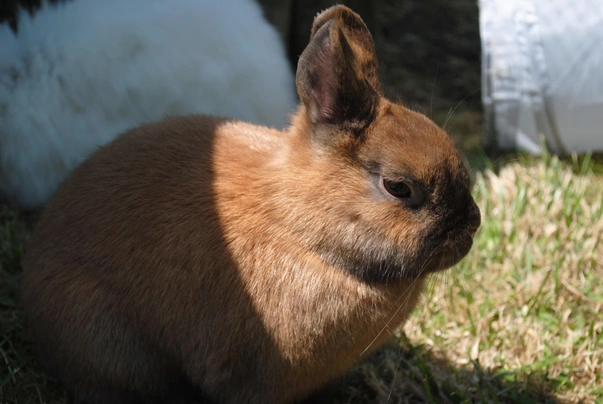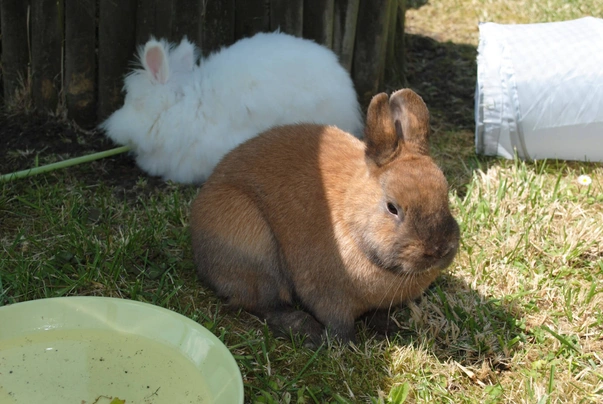Thuringer
Introduction of the Thuringer
This is a German rabbit breed that was actually first recognised in the Netherlands in the early part of the 20th Century and is still popular in Europe. It’s not seen often in other parts of the world and it isn’t recognised by the American Rabbit Breeders Association (ARBA).
The Thuringer is named after the German town in which it was first developed – Thuringia. It’s thought that the Belgian Giant, Himalayan and Silver were used to create the breed originally and as the result the Thuringer displays a striking coat that’s a deep ochre, with blue-black guard hairs.
History of the Thuringer
The Thuringer was first seen in Germany, where it was bred from Belgian, Himalayan and Silver examples to create a rounded, cobby animal with a rich yellow-brown coat ticked with blue-black guard hairs.
The Thuringer was created by David Gardner and was initially rejected by many of the breed clubs. Further refinement of the breed saw the founding of the Chamois Club – the Thuringer was originally known as the Thuringer Chamois – and although problems existed in trying to identify a standard for the breed, it was finally recognised in 1908.
Grey Giants were bred into the lines to improve the breed, but after World War II the numbers of Thuringers decreased and it would take many years for the lines to recover.
Appearance of the Thuringer
- Main colourways: deep yellow ochre with blue-black ticking
- Average weight: 3.6 – 4.5kg
The Thuringer is a medium sized rabbit that’s used for meat production and is also used for its fur. In France it’s often referred to as the Chamois de Thuringe as its colouring resembles that of the Chamois antelope. The dense coat of the Thuringer is a deep yellow-brown colour dark blueish black guard hairs. It’s silky and soft and the colour of the underside is a charcoal shade that extends to the chest, ears, flanks and shoulders, as well as the legs, rear and tail.
As a meat animal the Thuringer is quite stocky – often weighing in at around 8-10lbs. The body shows barely any neck. The animal has sturdy legs and the ears are held upright and are well covered with fur.
Temperament of the Thuringer
The Thuringer is renowned for being a placid animal, with a very pleasant character that makes it a great pet or show rabbit. It’s calm and enjoys the company of humans. It will enjoy some petting and physical interaction with its owner.
Any rabbit, however docile, can panic if it feels vulnerable or uncomfortable. It’s therefore important that any inexperienced owner learns how to handle and be around their rabbit. Picking up a rabbit must be done carefully as they can struggle if they’re not carried correctly. Rabbits are far stronger than they appear and can injure themselves or their handler if they do panic and struggle.
Health of the Thuringer
The Thuringer, like most breeds can develop dental problems. Its teeth must be checked regularly for signs of overgrown molars or spurs and his diet should include lost of fibrous vegetables that will keep his teeth in good condition. He should also be given the opportunity to gnaw. Toys can be bought for gnawing and logs placed in his living areas are also useful for this. Dental problems can affect his ability to eat and can cause injuries in the mouth, so it’s crucial that the teeth are kept worn down.
His diet should be managed to avoid weight gain as an overweight rabbit can find it difficult to groom himself. If his fur is allowed to become dirty or soiled with urine or faeces it can attract flies, which may lay eggs in the soiled fur and the maggots can cause injuries to the rabbit’s skin that will require veterinary attention.
All rabbits must be vaccinated against Viral Haemorrhagic Disease and myxomatosis and non-breeding females can be spayed in order to stop them developing uterine cancer, which is common in rabbits.
Caring for the Thuringer
Before you buy your rabbit it’s important to remember that these are social animals and will not be entirely happy unless they have some company. Another rabbit is the best kind of companion – guinea pigs are too small and may get injured by the larger rabbit. Think carefully about bringing a rabbit home – if you can give a home to one, could you give a home to two?
If your rabbit is going to live outdoors his hutch must be large enough for him to hop three times from one end to the other and stand upright on his hind legs. It should be completely weatherproof and positioned in a sheltered area or in a well-ventilated shed. The hutch should be lined with shavings and straw and should also include a covered area where the rabbit can build a nest. The hutch must be cleaned out completely once a week and droppings must be removed each day. As well as being weatherproof the hutch should also be completely impervious to predators.
Whether he’s going to live indoors or in a hutch, he should have frequent access to the outdoors except in very bad weather. A run or secure area of garden will allow him the opportunity to stretch his legs.
If he’s going to live in the house he can be taught to use a litter tray and he must be provided with somewhere he can relax completely. A crate or cage is ideal for this. Wires should be kept out of the way as these will usually be chewed.
His diet must include high quality hay, rabbit pellets and lost of fibrous green leaves and vegetables like kale, carrot tops, kale and dandelions and he should always have access to clean water.


